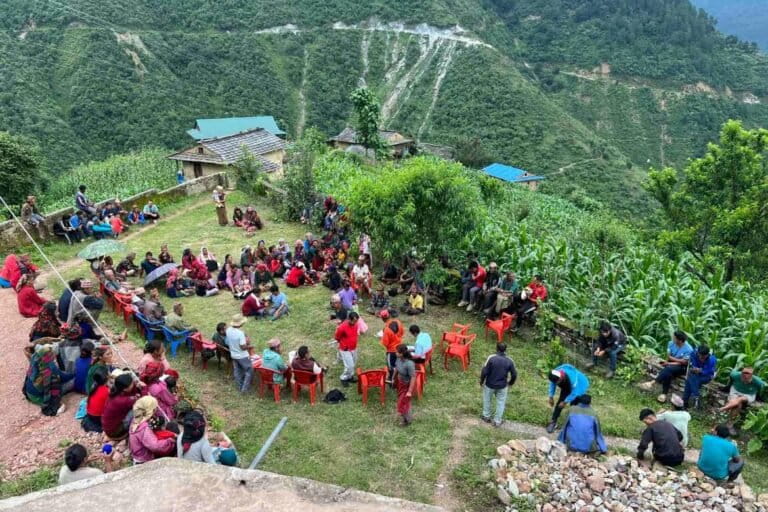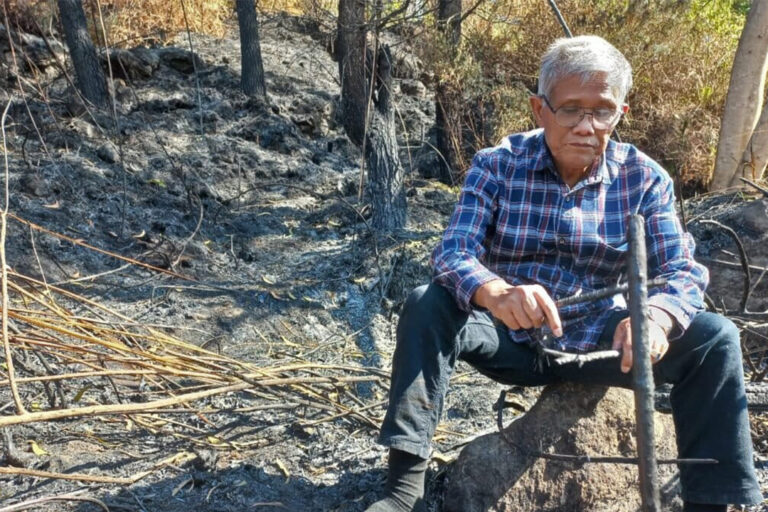It’s not easy to measure carbon in mountain forest ecosystems. For one thing, climbing into these forests can be difficult, exhausting, and even treacherous. For another, many mountain rainforests are almost constantly blanketed by clouds—hence the term “cloud forest”—making it problematic to measure above-ground carbon storage from the air or satellite. But a new review study in Biogeosciences found that many estimates of carbon storage in montane tropical forests have been largely underestimated.
“Tropical mountain forests are under heavy human pressure and are experiencing rapid rates of deforestation and degradation. It is well known that tropical mountain forests are biodiversity hotspots as well as playing an important role in downstream water resources. Our study demonstrates that tropical mountain forests are also globally important stores of carbon, providing more justification to protect these forests,” lead author Dominick Spracklen with the University of Leeds told mongabay.com.
 Cloud forest in Indonesia New Guinea. Photo by: Rhett A. Butler. |
Looking at over 90 studies of above-ground carbon in mountain forests, Spracklen and co-author Renton Righelato with the University of Reading, found that the angle of the forest’s slope has led to many erroneous carbon storage estimates.
“The angle of the slope means that the actual land-surface area of a hillside is greater than the planimetric area that is recorded by a map…On shallow slopes this makes little difference, but on the steep slopes found in mountain forests the land-surface area of mountain forests is actually a lot more than seen on a map,” explained Spracklen.
In fact, the scientists found that 75 percent of tropical forests on mountain sides rested on steep slopes, meaning that carbon storage in these ecosystems is 40 percent more than usually calculated worldwide.
Still, above-ground carbon in tropical montane forests remains less than in lowland rainforests by land area, but not by too much.
“We found that the difference is less than you might expect. In the Andes, mountain forests store only about 20 percent less above-ground carbon per land-surface area than lowland forests,” said Spracklen adding, “We don’t yet know the reason behind the differences. Some researchers are probing into how carbon fluxes change along altitude gradients, and these studies promise to tell us more about how and why changes occur.”
Moreover, the current research only looked at above-ground biomass and not the carbon sequestered in the soil. Spracklen says this area “needs more research.” In addition, studies of above-ground carbon in tropical montane forests have largely focused on the Andes with few studies in Africa or Asia. But still, the results show montane forests are likely a much more important carbon sink than expected.
“Hopefully our study will inspire forest carbon projects in the mountains,” Spracklen noted.

Forest cleared around hill for cattle ranching in Colombia. More-and-more montane forests are facing clearing. Photo by: Rhett A. Butler.
Citations:
- Spracklen, D. V. and Righelato, R.: Tropical montane forests are a larger than expected global carbon store, Biogeosciences, 11, 2741-2754, doi:10.5194/bg-11-2741-2014, 2014.
Related articles

(03/14/2014) What do mountains have to do with climate change? More than you’d expect: new research shows that the weathering rates of mountains caused by vegetation growth plays a major role in controlling global temperatures. Scientists from the University of Oxford and the University of Sheffield have shown how tree roots in certain mountains “acted like a thermostat” for the global climate.
Sky islands: exploring East Africa’s last frontier
,-South-Pare-Mts.-Tanzania.150.jpg)
(12/04/2013) The montane rainforests of East Africa are little-known to the global public. The Amazon and Congo loom much larger in our minds, while the savannas of East Africa remain the iconic ecosystems for the region. However these ancient, biodiverse forests—sitting on the tops of mountains rising from the African savanna—are home to some remarkable species, many found only in a single forest. A team of international scientists—Michele Menegon, Fabio Pupin, and Simon Loader—have made it their mission to document the little-known reptiles and amphibians in these so-called sky islands, many of which are highly imperiled.
Forests increasingly limited to steeper slopes
(10/01/2013) Forests are increasingly limited to steep slopes as mankind continues to clear lowland areas suitable for agriculture and urban areas, finds a new study published in Nature Communications. The trend has significant implications for global biodiversity.
Climate change could kill off Andean cloud forests, home to thousands of species found nowhere else

(09/18/2013) One of the richest ecosystems on the planet may not survive a hotter climate without human help, according to a sobering new paper in the open source journal PLoS ONE. Although little-studied compared to lowland rainforests, the cloud forests of the Andes are known to harbor explosions of life, including thousands of species found nowhere else. Many of these species—from airy ferns to beautiful orchids to tiny frogs—thrive in small ranges that are temperature-dependent. But what happens when the climate heats up?














